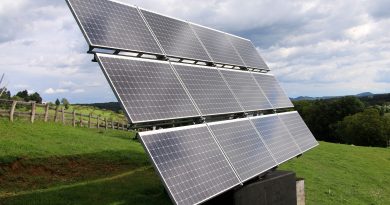Can You Install Solar Panels On A Metal Roof
Installing solar panels on a metal roof offers unique advantages such as durability, ease of installation, and energy efficiency, but it also comes with specific challenges that need careful consideration. This guide covers all you need to know about installing solar panels on metal roofs, from assessing suitability to navigating through potential challenges.
Table of Contents
- 1 Assessing Metal Roof Suitability for Solar Panel Installation
- 1.0.1 Understanding Different Types of Metal Roofs
- 1.0.2 Preparing the Metal Roof for Installation (Cleaning, Sealing, Reinforcement)
- 1.0.3 Choosing the Right Solar Panel Mounting System for Metal Roofs
- 1.0.4 Installation Techniques and Safety Precautions
- 1.0.5 Potential Challenges and Troubleshooting Tips
- 1.0.6 The Impact of Metal Roofs on Solar Panel Performance
- 1.0.7 Government Regulations and Building Codes for Metal Roof Solar Installations
- 1.0.8 Case Studies of Successful Solar Panel Installations on Metal Roofs
- 1.0.9 Cost Considerations and Payback Periods for Metal Roof Solar Systems
Assessing Metal Roof Suitability for Solar Panel Installation
Before proceeding with installation, it’s crucial to assess whether your metal roof can support solar panels. This involves checking the age, condition, and load-bearing capacity of the roof. Roofs in good condition without signs of rust or structural damage are typically suitable for solar installations.
Understanding Different Types of Metal Roofs
Metal roofs come in various types, including corrugated, standing seam, and flat seam. Each type requires a different approach to installation:
- Corrugated Metal Roofs: These require special mounting brackets that fit the roof’s shape.
- Standing Seam Metal Roofs: The easiest type for solar installations, as they allow for clamp-on mounts that do not penetrate the roof.
- Flat Seam Metal Roofs: Often require a rail-based mounting system with penetrations to secure the panels.
Preparing the Metal Roof for Installation (Cleaning, Sealing, Reinforcement)
Preparation is key to a successful installation:
- Cleaning: Remove any debris, dust, or residues that could affect the installation.
- Sealing: Check for and seal any potential leaks. Although metal roofs are less prone to leaks, it’s a good precaution, especially around any new penetrations.
- Reinforcement: Depending on the roof’s condition and the weight of the solar system, additional structural support might be necessary.
Choosing the Right Solar Panel Mounting System for Metal Roofs
Selecting an appropriate mounting system is crucial for securing the panels and ensuring long-term stability.
- Clamp Mounts for Standing Seam Roofs: These are non-penetrative and utilize the raised seams of the roof.
- Bracket Systems for Corrugated Roofs: These conform to the roof’s shape and may require minor penetrations.
- Rail Systems for Flat Seam Roofs: These typically involve more penetrations but offer a stable installation base.
Installation Techniques and Safety Precautions
- Follow Manufacturer’s Guidelines: Always adhere to the specific instructions provided by the mounting system manufacturer.
- Use Proper Safety Gear: Safety harnesses, gloves, and helmets are essential due to the slipperiness and height of metal roofs.
Potential Challenges and Troubleshooting Tips
- Thermal Expansion: Metal roofs expand and contract based on temperature changes. Use mounts that accommodate this movement.
- Condensation: Ensure proper ventilation under the solar panels to prevent condensation, which can lead to rust or degradation of roofing material.
The Impact of Metal Roofs on Solar Panel Performance
Metal roofs can improve solar panel efficiency due to their reflective properties, which can help keep the panels cooler and thus more efficient.
Government Regulations and Building Codes for Metal Roof Solar Installations
Compliance with local building codes and obtaining necessary permits is crucial. This might include structural assessments and electrical inspections.
Case Studies of Successful Solar Panel Installations on Metal Roofs
Including case studies or real-world examples provides insights and confidence about the feasibility and benefits of solar installations on metal roofs.
Cost Considerations and Payback Periods for Metal Roof Solar Systems
Finally, understanding the financial aspects, such as the initial investment, potential savings, and incentives or rebates available, helps in evaluating the economic feasibility of the project.
By following these guidelines and considerations, homeowners and businesses with metal roofs can successfully install solar panels, contributing to sustainability and enjoying the benefits of renewable energy.
4


